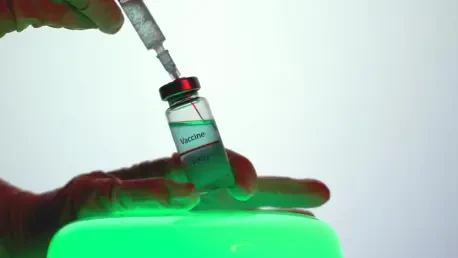I’m thrilled to sit down with Ivan Kairatov, a renowned biopharma expert with extensive experience in research and development, particularly in the realm of innovative technologies for neurological disorders. Today, we’re diving into the recent clinical trial results from Praxis Precision Medicines for their drug vormatrigine, a potential game-changer in epilepsy treatment. Our conversation explores the significance of the trial outcomes, the unique aspects of this new therapy, challenges in patient tolerability, and the broader implications for the field of seizure management. Let’s get started.
Can you give us an overview of Praxis Precision Medicines and the primary focus of their recent clinical trial for vormatrigine?
Absolutely. Praxis Precision Medicines is a biotech company dedicated to developing therapies for central nervous system disorders, with a strong emphasis on precision medicine. Their recent mid-stage clinical trial focused on vormatrigine, an oral drug aimed at treating adults with epileptic disorders, specifically focal onset and tonic-clonic seizures. The trial spanned about two months, testing the drug’s ability to reduce seizure frequency in patients who were often already on multiple other medications. It’s an exciting step toward addressing unmet needs in epilepsy care.
How significant is the 56% reduction in median seizure frequency that was reported in the trial, and did it align with your expectations?
The 56% reduction is quite meaningful, especially in a field where incremental improvements can make a big difference in patients’ lives. It surpassed the threshold that many analysts considered a “best case” scenario, which was around 55%. From a clinical perspective, this suggests vormatrigine has strong potential to be a competitive option. I think the team at Praxis likely hoped for a result in this range, given the design of the trial and the drug’s mechanism, so it’s a promising outcome, though there are still layers to unpack regarding long-term impact.
Despite achieving this impressive reduction, the company’s stock dropped by 13%. What do you think might have driven this unexpected investor response?
That’s a complex issue. While the 56% reduction met a key benchmark, investor reactions often hinge on more than just headline numbers. There could be concerns about the competitive landscape, as other companies are also developing seizure medications that might be further along. Additionally, the trial reported some discontinuations and adverse events, which might have raised questions about tolerability. Market dynamics, like broader economic factors or skepticism about the drug’s differentiation, could also play a role. It’s a reminder that clinical success doesn’t always translate directly to financial confidence.
What sets vormatrigine apart from other sodium channel blockers currently available for epilepsy treatment?
Sodium channel blockers are a well-established class for managing seizures, but many come with limitations like side effects or complex dosing regimens. Vormatrigine is designed to potentially offer a better profile in terms of ease of use and tolerability. While I don’t have access to the full mechanistic details, the trial suggests it might act more efficiently or with fewer drawbacks like dizziness or the need for slow dose adjustments. Praxis seems to be aiming for a drug that clinicians can prescribe more readily, even for less severe cases, which could broaden its applicability.
Many existing treatments cause side effects like drowsiness or require gradual dose increases. How does vormatrigine aim to improve the patient experience in this regard?
That’s a critical point. Side effects like drowsiness or dizziness can significantly impact a patient’s daily life, and slow titration—where doses are ramped up over weeks—can delay effective treatment. Vormatrigine appears to be developed with a focus on minimizing these issues, potentially allowing for quicker therapeutic effects with fewer disruptions. While the trial did report some adverse events, the overall tolerability was described as good, which could mean a smoother experience for patients with focal onset or tonic-clonic seizures compared to some current options.
The trial showed that over half of the participants experienced a 50% reduction in seizures within just the first week. How important is this rapid onset for both patients and healthcare providers?
It’s incredibly important. For patients, a rapid reduction in seizure frequency can mean a quicker return to normalcy—less fear of unpredictable episodes and more ability to engage in daily activities. For healthcare providers, it offers a tool that can deliver results fast, which is crucial in managing patient expectations and building trust in a treatment plan. This kind of early response could also influence how doctors position vormatrigine in their treatment algorithms, potentially making it a go-to option for certain cases.
About 22% of participants achieved complete seizure freedom by the eight-week mark. Can you share what this milestone means for those individuals and their quality of life?
Achieving seizure freedom is life-changing. For those 22% of participants, it means no longer living with the constant threat of a seizure, which can disrupt work, relationships, and even basic safety. It’s not just about physical health—it’s a profound emotional and psychological relief. Being seizure-free can allow individuals to drive again, pursue hobbies, or simply feel more independent. This result, even in a subset of patients, underscores the potential of vormatrigine to transform lives in a way that’s hard to overstate.
Given that many participants were already on multiple anti-seizure drugs, including sodium channel blockers, how challenging was it to show vormatrigine’s effectiveness in this group?
It’s extremely challenging. When patients are already on multiple therapies—over 80% on sodium channel blockers in this case—it’s tough to isolate the effect of a new drug. You’re essentially looking for an incremental benefit in a population that’s already heavily treated, often with refractory or hard-to-control seizures. The fact that vormatrigine still demonstrated a significant reduction in seizure frequency speaks to its potential as a valuable add-on therapy. It suggests the drug might address gaps that current treatments can’t, which is a strong signal for its future role in clinical practice.
The trial noted that while vormatrigine was generally well tolerated, there were some severe and serious adverse events. Can you shed light on what these might have been and how they were managed?
While the specifics of each case aren’t fully detailed in the public data, severe and serious adverse events in epilepsy trials often include things like significant neurological side effects, allergic reactions, or exacerbations of underlying conditions. The good news is that all reported events in this trial resolved, which suggests they were manageable, likely through dose adjustments or supportive care. This resolution is key—it indicates that while there are risks, they aren’t necessarily prohibitive, and the overall safety profile remains encouraging. Still, these events will need close monitoring in larger studies.
With nearly one in four participants discontinuing the study, what do you think were the primary reasons for this, and how might it impact perceptions of the drug’s tolerability?
Discontinuation rates are always a concern in clinical trials. The reasons could range from intolerable side effects like dizziness or headache—common in this class of drugs—to personal factors unrelated to the medication, such as difficulty adhering to the study protocol. A dropout rate of about 25% isn’t unheard of in epilepsy trials, but it does raise questions about how well vormatrigine will be received in real-world settings. It might temper enthusiasm among some clinicians or patients if they perceive the drug as hard to stick with, though further data on the exact causes of discontinuation will be critical to shaping that narrative.
Looking ahead, what is your forecast for the future of epilepsy treatments like vormatrigine in the competitive landscape of neurological therapies?
I’m cautiously optimistic. The field of epilepsy treatment is ripe for innovation, as there’s still a significant unmet need for therapies that balance efficacy, tolerability, and ease of use. Vormatrigine’s early data suggest it could carve out a niche, particularly for patients who don’t respond well to existing options or need an add-on therapy. However, the competitive landscape is crowded, with other developers working on similar drugs. Success will depend on how vormatrigine differentiates itself in larger trials and real-world use, as well as how it navigates regulatory and market challenges. I think we’re on the cusp of a wave of new options that could really personalize epilepsy care, and vormatrigine might play a key role in that evolution.









